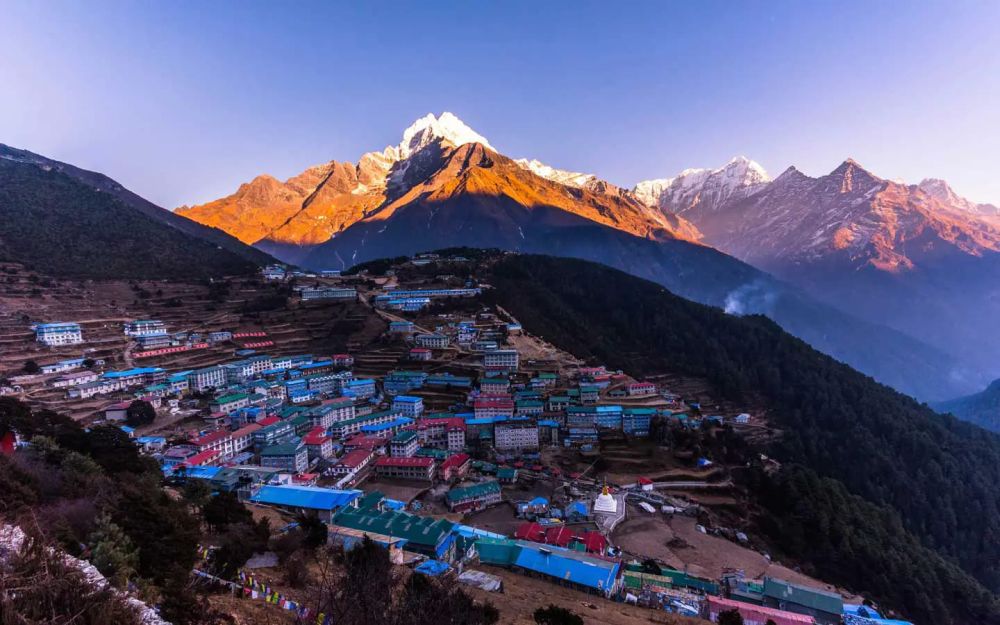

Namche Bazaar, often known as the gateway to the high Himalayas of Nepal, especially Mount Everest, has a rich and vibrant history tied to tourism and mountaineering. Nestled in the Khumbu region at an altitude of 3,440 meters, this high-altitude town has been a crucial stopover for trekkers and mountaineers for decades.
Tourism in Namche Bazaar began to flourish in the 1950s with the ascent of Mount Everest. The success of the 1953 Everest Expedition, led by John Hunt and with Tenzing Norgay Sherpa and Sir Edmund Hillary reaching the summit, put Nepal and its mountain ranges on the global map. The level of tourism in the area was transformed as adventurers from all around the world started flocking to the region, seeking to challenge themselves against the famed peaks of the Himalayas.
Namche Bazaar rapidly developed from a small trading post to a thriving town offering various amenities such as lodges, equipment stores, internet cafes, and bakeries to cater to the needs of tourists. The area's Sherpa community, known for their high-altitude climbing prowess, became integral to the burgeoning tourism sector, acting as guides and porters for expeditions.
In 1976, the establishment of the Sagarmatha National Park, which includes Namche Bazaar, further protected the region's unique biodiversity and cultural heritage. The park's status as a UNESCO World Heritage Site since 1979 has also amplified its allure among eco-tourists and nature lovers.
The latest trends in tourism in Namche Bazaar follow a pattern of sustainable tourism and experience-driven travel. Visitors are increasingly seeking authentic experiences that include cultural immersion with the local Sherpa community, participation in local festivals like the Dumji festival, and even adventurous activities beyond trekking and climbing, such as mountain biking and trail running.
Eco-friendly practices are also on the rise, with many lodges and tour operators encouraging responsible tourism to preserve the local environment and cultural standards. There has been a growing emphasis on reducing waste, promoting energy conservation, and ensuring that tourism benefits the local economy directly.
Another emerging trend is the enhancement of luxury travel in the region. High-end lodges and exclusive tours now cater to those who wish to experience the grandeur of the Himalayas without compromising comfort. These luxury offerings include helicopter tours, gourmet dining with panoramic mountain views, and deluxe accommodations.
Despite its remote location, Namche Bazaar has become better connected to the world with the improvement of internet and communication services. These advancements have made it easier for tourists to share their Himalayan adventures in real-time, significantly increasing global awareness and appeal of the region.
Namche Bazaar has evolved from a modest trading hub to a sophisticated tourist destination without losing its traditional charm and cultural significance. Its continued development, commitment to sustainability, and the allure of the majestic Himalayas ensure that this Nepalese treasure will be a sought-after destination for many years to come.